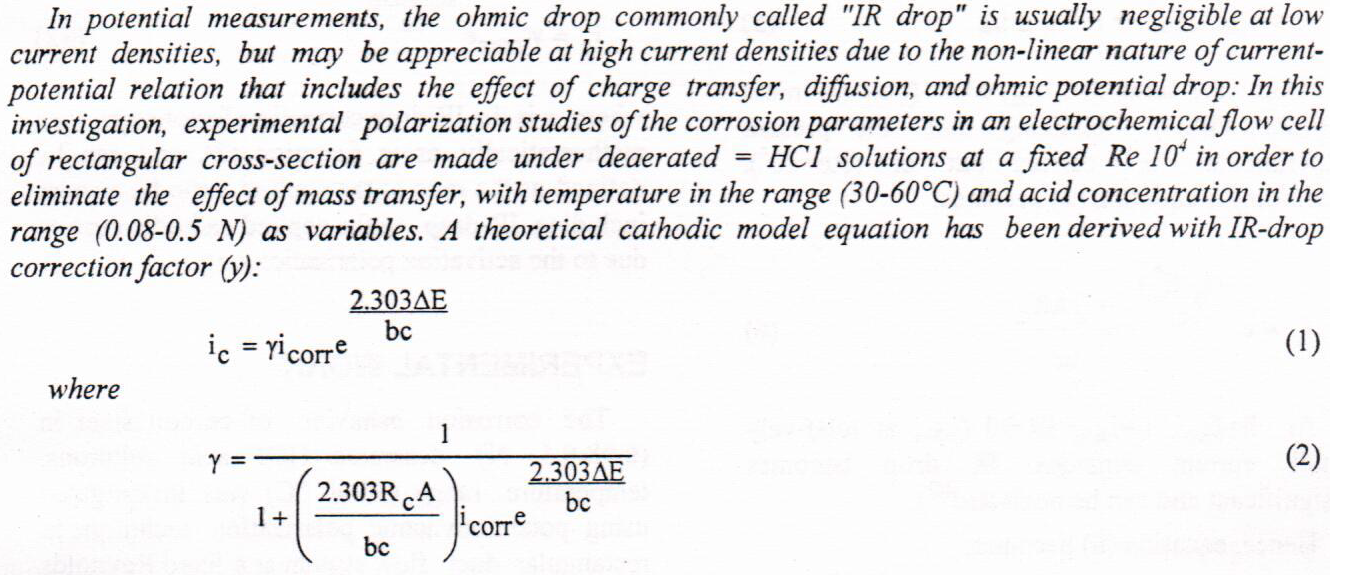
Fourier Transform-Infrared (FT-IR) spectroscopy was used to analyze gasoline engine oil (SAE 5W20) samples that were exposed to seven different oxidation times (0 h, 24 h, 48 h, 72 h, 96 h, 120 h, and 144 h) to determine the best wavenumbers and wavenumber ranges for the discrimination of the oxidation times. The thermal oxidation process generated oil samples with varying total base number (TBN) levels. Each wavenumber (400–3900 cm−1) and wavenumber ranges identified from the literature and this study were statistically analyzed to determine which wavenumbers and wavenumber ranges could discriminate among all oxidation times. Linear regression was used with the best wavenumbers and wavenumber ranges to predict oxidation time.
... Show More (20)
(20)
 (19)
(19)
Dust and bird residue are problems impeding the operation of solar street lighting systems, especially in semi-desert areas, such as Iraq. The system in this paper was designed and developed locally using simple and inexpensive materials. The system runs automatically. It Connects to solar panels used in solar street lighting, and gets the required electricity from the same solar system. Solar panels are washed with dripping water in less than half a minute by this system. The cleaning period can also be controlled. It can also control, sensing the amount of dust the system operates. The impact of different types of falling dust on panels has also been studied. This was collected from different winds and studied their impact o
... Show More (3)
(3)
 (1)
(1)
 (1)
(1)
An optoelectronic flow-through detector for active ingredients determination in pharmaceutical formulations is explained. Two consecutive compact photodetector’s devices operating according to light-emitting diodes-solar cells concept where the LEDs acting as a light source and solar cells for measuring the attenuated light of the incident light at 180˚ have been developed. The turbidimetric detector, fabricated of ten light-emitting diodes and five solar cells only, integrated with a glass flow cell has been easily adapted in flow injection analysis manifold system. For active ingredients determination, the developed detector was successfully utilized for the development and validation of an analytical method for warfarin determination
... Show More (21)
(21)
 (12)
(12)
An optoelectronic flow-through detector for active ingredients determination in pharmaceutical formulations is explained. Two consecutive compact photodetector’s devices operating according to light-emitting diodes-solar cells concept where the LEDs acting as a light source and solar cells for measuring the attenuated light of the incident light at 180˚ have been developed. The turbidimetric detector, fabricated of ten light-emitting diodes and five solar cells only, integrated with a glass flow cell has been easily adapted in flow injection analysis manifold system. For active ingredients determination, the developed detector was successfully utilized for the development and validation of an analytical method for warfarin determination
... Show More (21)
(21)
 (12)
(12)
Case Report.
To present a case of a previous complicated mandibular orthognathic surgery that aimed to setback the mandible in a female cleft lip and palate (CLP) patient, which led to bone necrosis on one side with subsequent severe mandibular deviation and facial asymmetry. We additionally reviewed the previous reports of similar complications, the pathophysiology and the factors that could lead to this dreadful result.
A 27-year-old female patient presented with a severe dentofacial deformity secondary to a complicated bilateral sagittal spli
ABSTRACT Planetary Nebulae (PN) distances represent the fundamental parameter for the determination the physical properties of the central star of PN. In this paper the distances scale to Planetary Nebulae in the Galactic bulge were calculated re- lated to previous distances scales. The proposed distance scale was done by recalibrated the previous distance scale technique CKS/D82. This scale limited for nearby PN (D ≤ 3.5 kpc), so the surface fluxes less than other distance scales. With these criteria the results showed that the proposed distance scale is more accurate than other scales related to the observations for adopted sample of PN distances, also the limit of ionized radius (Rio) for all both optically thick and optically thin in
... Show MoreNumerous integral and local electron density’s topological parameters of significant metal-metal and metal-ligand bonding interactions in a trinuclear tetrahydrido cluster [(Cp* Ir) (Cp Ru)2 (μ3-H) (μ-H)3]1 (Cp = η5 -C5Me5), (Cp* = η5 -C5Me4Et) were calculated and interpreted by using the quantum theory of atoms in molecules (QTAIM). The properties of bond critical points such as the delocalization indices δ (A, B), the electron density ρ(r), the local kinetic energy density G(r), the Laplacian of the electron density ∇2ρ(r), the local energy density
... Show More (4)
(4)
 (1)
(1)
The paper presents a highly accurate power flow solution, reducing the possibility of ending at local minima, by using Real-Coded Genetic Algorithm (RCGA) with system reduction and restoration. The proposed method (RCGA) is modified to reduce the total computing time by reducing the system in size to that of the generator buses, which, for any realistic system, will be smaller in number, and the load buses are eliminated. Then solving the power flow problem for the generator buses only by real-coded GA to calculate the voltage phase angles, whereas the voltage magnitudes are specified resulted in reduced computation time for the solution. Then the system is restored by calculating the voltages of the load buses in terms
... Show MoreSolar module operating temperature is the second major factor affects the performance of solar photovoltaic panels after the amount of solar radiation. This paper presents a performance comparison of mono-crystalline Silicon (mc-Si), poly-crystalline Silicon (pc-Si), amorphous Silicon (a-Si) and Cupper Indium Gallium di-selenide (CIGS) photovoltaic technologies under Climate Conditions of Baghdad city. Temperature influence on the solar modules electric output parameters was investigated experimentally and their temperature coefficients was calculated. These temperature coefficients are important for all systems design and sizing. The experimental results revealed that the pc-Si module showed a decrease in open circuit v
... Show More